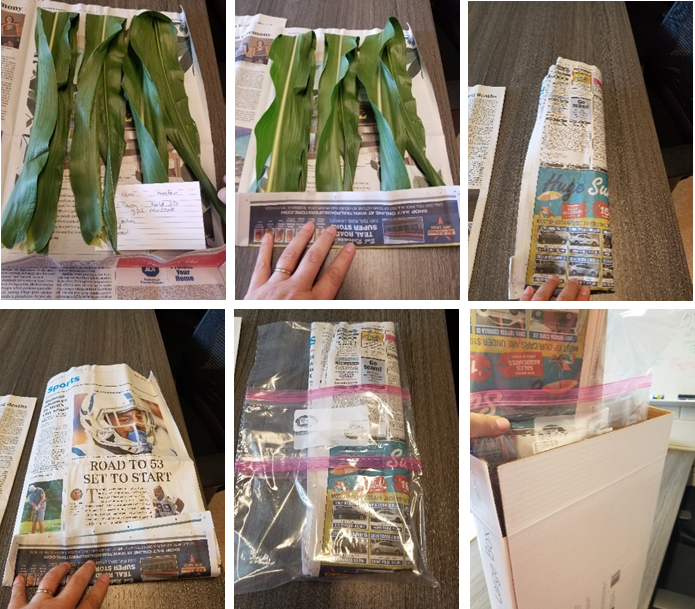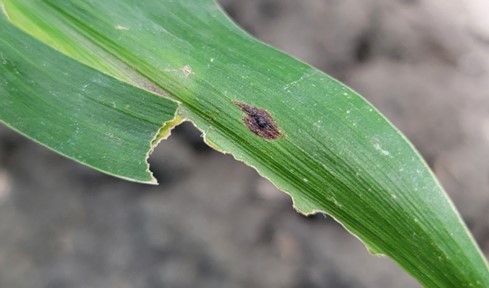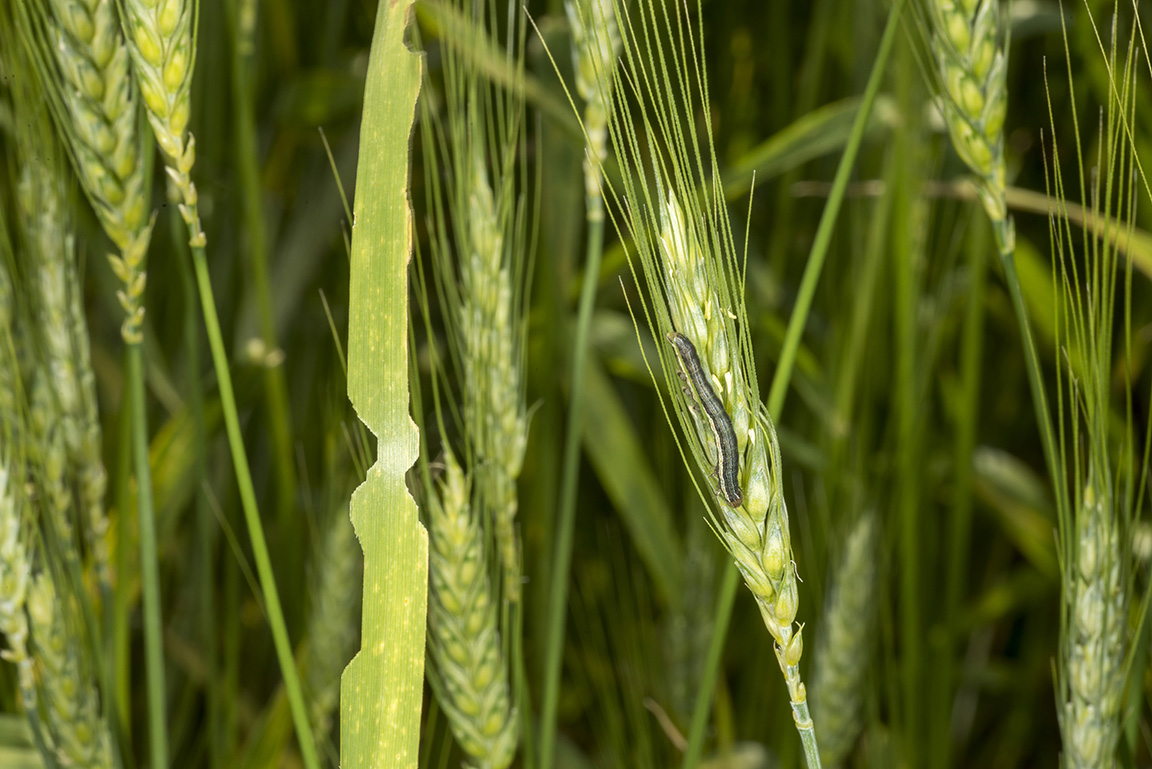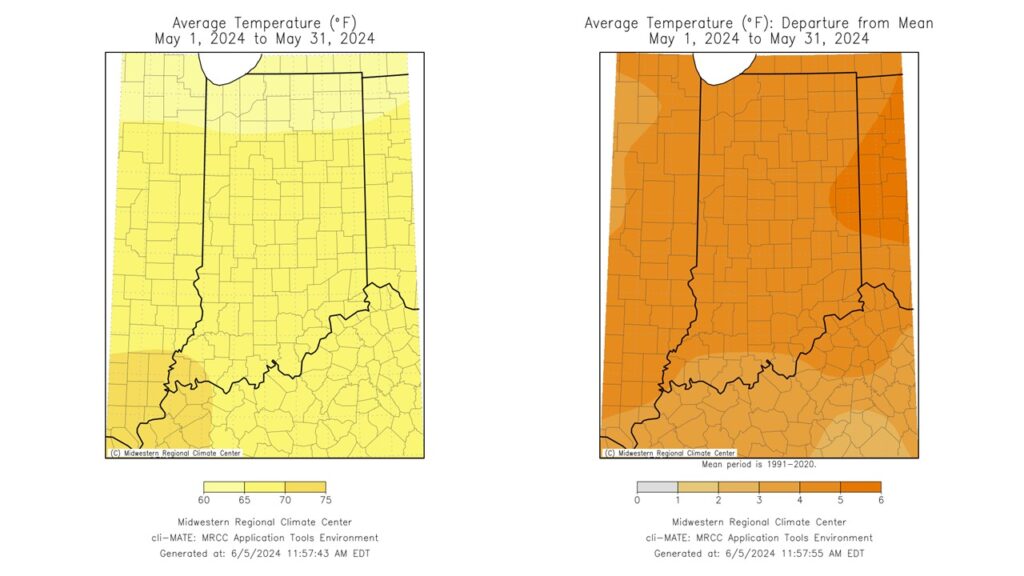
Taking large round and large rectangular bales and wrapping them with white plastic to make bale silage (baleage) has become a common practice.

Taking large round and large rectangular bales and wrapping them with white plastic to make bale silage (baleage) has become a common practice.

Purple Corn: purple corn symptoms (Image 1) are caused by the accumulation of a purple pigment in the corn leaves known as anthocyanin.

The field crop pathology research program is continuing to track the distribution of corn and soybean field diseases in Indiana.

Corn growth stages are quite variable across Indiana but a number of areas with early planted corn about waist high.

You better not feed yew to the ewe (and other livestock) In memory of livestock that met “Their Maker” because they ate yew. It’s that time of year when the yew (pronounced like the letter “U”) is likely in need of a trim to look best as a landscaping plant. Yews have been used as a common landscaping shrub or small tree for decades. They have closely spaced, glossy, rather tough, dark green, linear pointed-end leaves that are 1.5 – 2 inches long. Hard-to-see male and female flowers are found on separate plants and form fleshy red to yellow fruits that contain a single seed. Many plants have poisonous compounds that can cause all kinds of concerns, and even death, if consumed. The interactions that I have had with veterinarians, suggest that the yew is right at or near the top of plants that cause livestock death. A disheartening scenario[Read More…]
Recent wet, rainy weather has created some weed management challenges for Indiana growers. In this article we will hit on a few key points to consider based on current challenges. Delayed weed control in corn. Indiana corn growers rely heavily on premixes in corn that contain some combination of group 15 herbicides (metolachlor, acetochlor, pyroxasulfone), atrazine, mesotrione (Callisto), clopyralid (Stinger), and bicyclopyrone. Rain will not have completely washed all of the herbicide away, but may have compromised overall activity. Scout fields as soon as possible to determine if weeds are escaping. Obviously giant ragweed is a big concern, but wet conditions and dilution of atrazine can result in failures to control velvetleaf, burcucumber, morningglories, waterhemp, cocklebur and others. If corn is less than 12 inches tall and you haven’t used all of the atrazine allowed by the label, it would be wise to add atrazine to the other postemergence herbicides[Read More…]

Pre-harvest herbicide applications may be needed in wheat fields that have a lot of weed growth due to the recent wet weather patterns. These herbicide applications address several issues such as harvest difficulties, dockage problems, weed seed production, and soil water depletion. Although it may not be possible to recover lost yield potential due to weed interference, a pre-harvest treatment can go a long way toward reducing weed problems in future years by preventing the production and spread of weed seed. Herbicides labeled for use as harvest aids in wheat are listed in Table 1. There are differences in how quickly they act to control target weeds, the interval requirement between application and grain harvest, and the level or length of control achieved. All of these herbicide treatments will require thorough spray coverage to be most effective and can be used once wheat reaches the hard dough stage, which is[Read More…]

Earlier this week, we received reports of armyworm in northern counties continuing to damage wheat.

Allergy season is in full swing. At least, it is for me. Runny nose, itchy eyes, and consistent drainage that I have to clear in the shower every morning.
Armyworm Pheromone Trap Report – 2024
© 2024 Purdue University | An equal access/equal opportunity university | Copyright Complaints | Maintained by Pest&Crop newsletter
If you have trouble accessing this page because of a disability, please contact Pest&Crop newsletter at luck@purdue.edu.